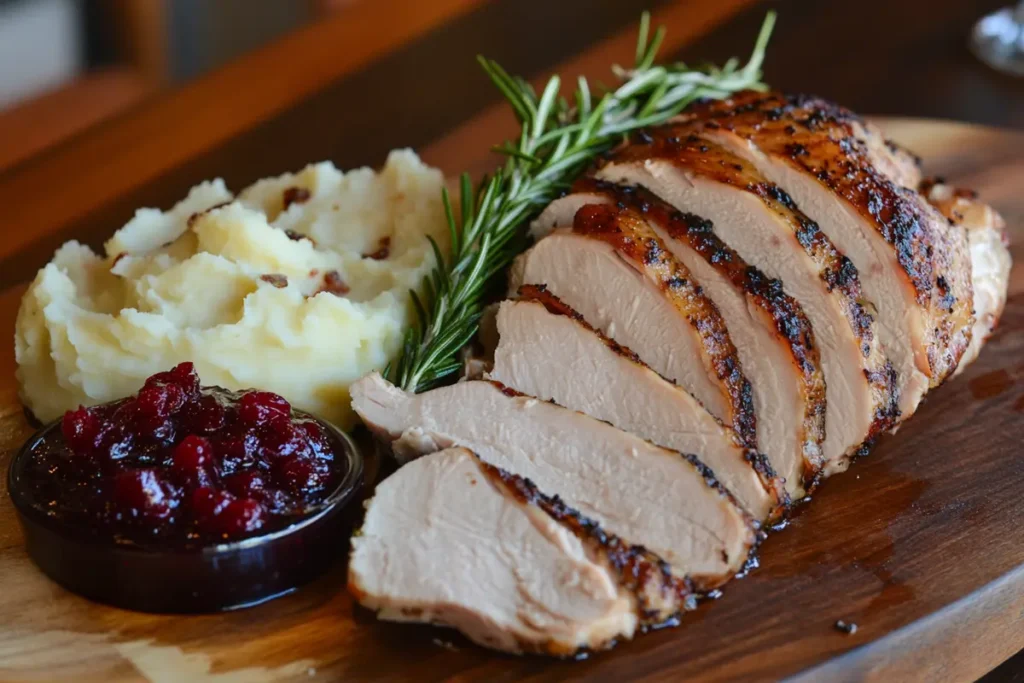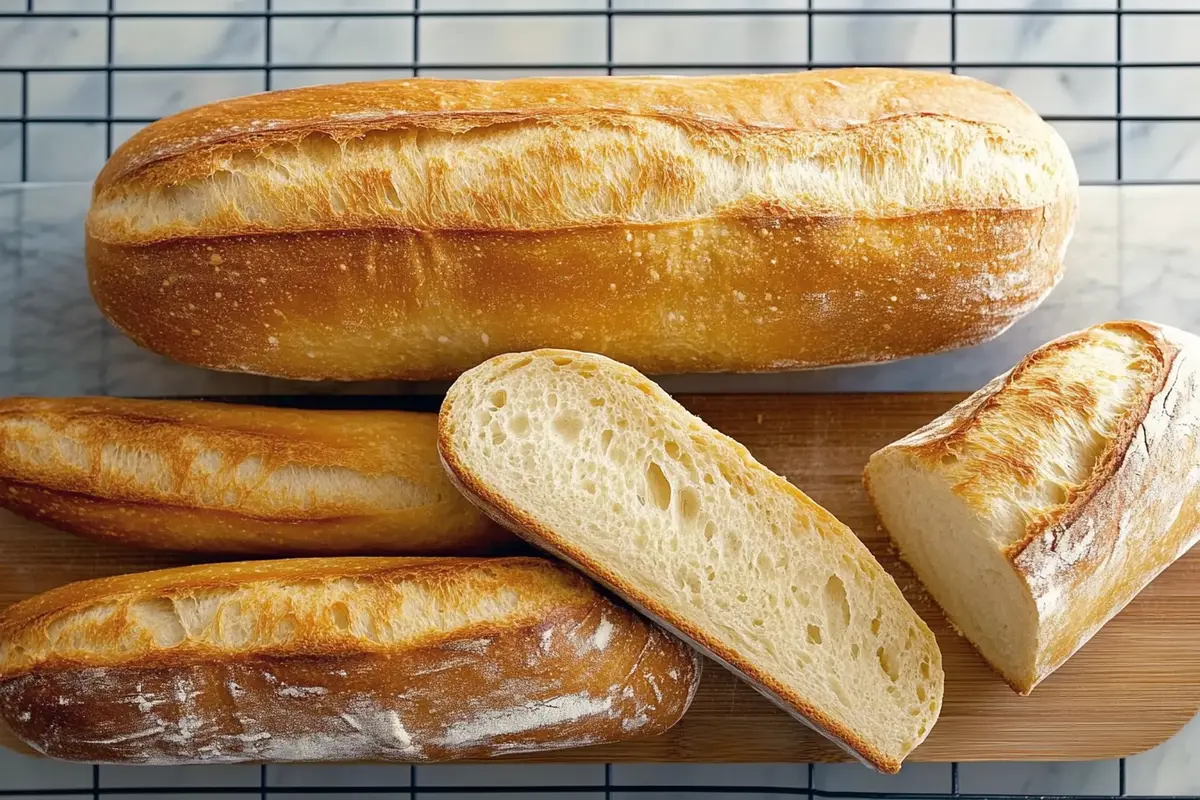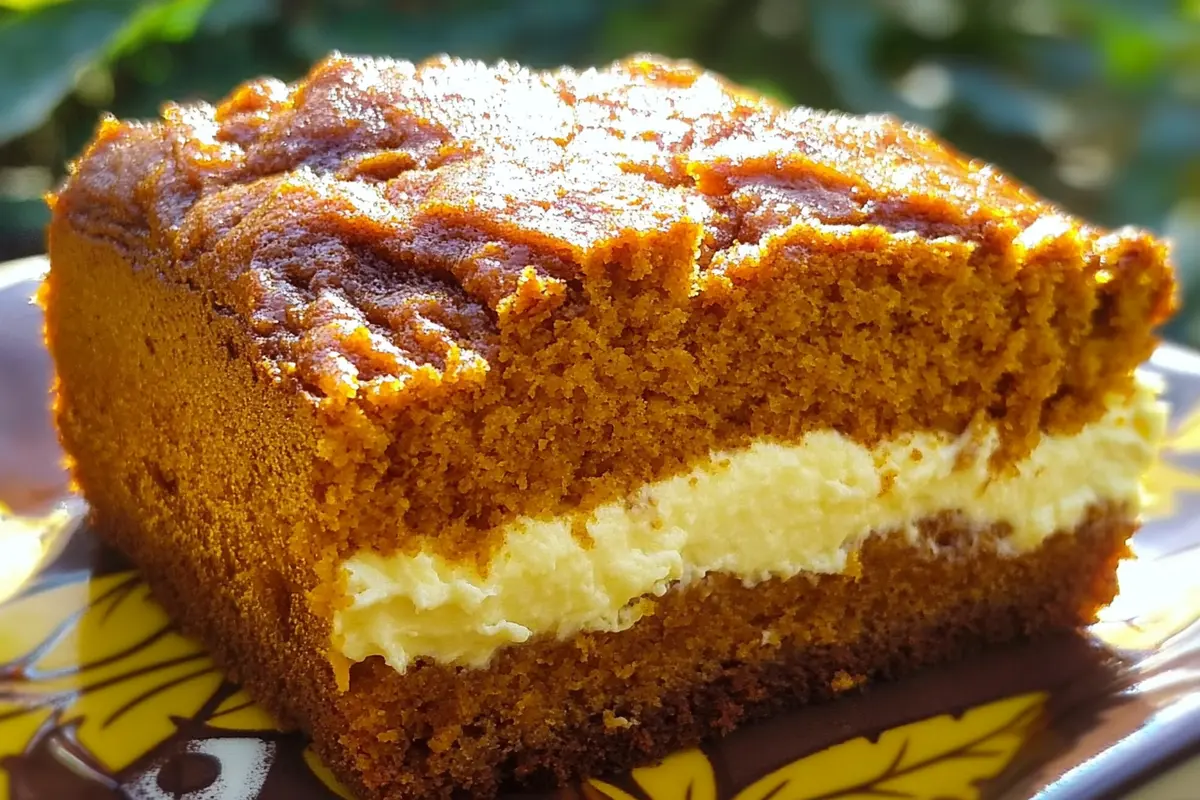Introduction to Smoked Turkey Breast
What is Smoked Turkey Breast?
Smoked turkey breast is the result of slow cooking and infusing turkey with smoky, aromatic flavors. Using a combination of heat and carefully selected wood chips, this process elevates the natural flavor of turkey, creating a moist, tender, and flavorful protein option. It’s a favorite choice for celebrations, casual dinners, and everything in between.
Notably, this method enhances not just taste but also the texture, giving it a succulent quality that rivals traditional roasted turkey. Thanks to its ease of preparation and versatility, smoked turkey breast has become a go-to recipe for home cooks and seasoned chefs alike.
Benefits of Choosing Turkey Breast Over Whole Turkey
Opting for turkey breast instead of a whole bird has several clear advantages. First, it’s much more manageable—perfect for those who might feel daunted by cooking a whole turkey. Whether you’re feeding a small family or just trying to avoid leftovers, turkey breast offers just the right portion size.
Another major benefit is the reduced cooking time. With a whole turkey, you may spend hours smoking and monitoring, but a turkey breast cuts that down significantly. Plus, you get the best part of the bird without having to wrestle with bones and darker cuts.
Selecting the Right Turkey Breast
Fresh vs. Frozen Turkey Breast
- Fresh Turkey Breast:
Fresh turkey breast is known for its tenderness and natural flavor. When you opt for fresh, you’re getting a cut that’s often juicier and more flavorful because it hasn’t been subjected to freezing. However, fresh turkey breast has a shorter shelf life, meaning you’ll need to prepare it fairly quickly after purchase. It’s a great option for those planning a meal within a few days. - Frozen Turkey Breast:
On the flip side, frozen turkey breast offers convenience and longevity. It’s readily available year-round and can be stored for months, making it a practical option for meal planners or those who want to stock up ahead of a holiday. Keep in mind, though, that thawing a frozen turkey breast properly is crucial to maintaining its quality. Improper thawing can lead to uneven cooking or, worse, food safety concerns.
Bone-In vs. Boneless Turkey Breast
- Bone-In Turkey Breast:
Bone-in turkey breast is often praised for its ability to retain moisture and deliver enhanced flavor. The bone acts as an insulator, helping the meat cook evenly while adding depth to the overall taste. However, this option requires a longer cooking time, and carving around the bone can be tricky for some. For those willing to invest the extra effort, the payoff is well worth it. - Boneless Turkey Breast:
If simplicity and efficiency are your priorities, boneless turkey breast is the way to go. It’s easier to handle, quicker to cook, and straightforward to carve, making it a fantastic choice for beginners. The one downside is that it may dry out faster during smoking, so keeping an eye on internal temperatures is essential to avoid overcooking.
Importance of Quality and Sourcing
- Better Flavor: High-quality turkey breast tends to have superior taste and texture, thanks to better farming practices and handling.
- Food Safety: Purchasing from reputable sources reduces the risk of contamination or spoilage, giving you peace of mind as you prepare your meal.
- Ethical Considerations: Many consumers today value humane farming practices. Choosing turkey from a trusted supplier not only benefits the dish but also aligns with ethical and sustainable choices.
Preparation Techniques
Thawing Frozen Turkey Breast Safely
- Refrigerator Thawing:
This is the safest and most reliable method, although it requires planning. Simply place the turkey breast on a tray to catch any drips and let it sit in the refrigerator. Allow approximately 24 hours of thawing time for every 4–5 pounds of turkey. For a 6-pound turkey breast, for example, this means setting it in the fridge two days in advance. - Cold Water Thawing:
Need to thaw your turkey breast faster? Cold water thawing is a quicker option, but it requires more attention. Submerge the turkey breast (still in its original packaging) in cold water, and change the water every 30 minutes to keep it cold and safe. This method takes about 30 minutes per pound, so a 6-pound turkey breast will take around three hours.
Brining: Enhancing Flavor and Moisture
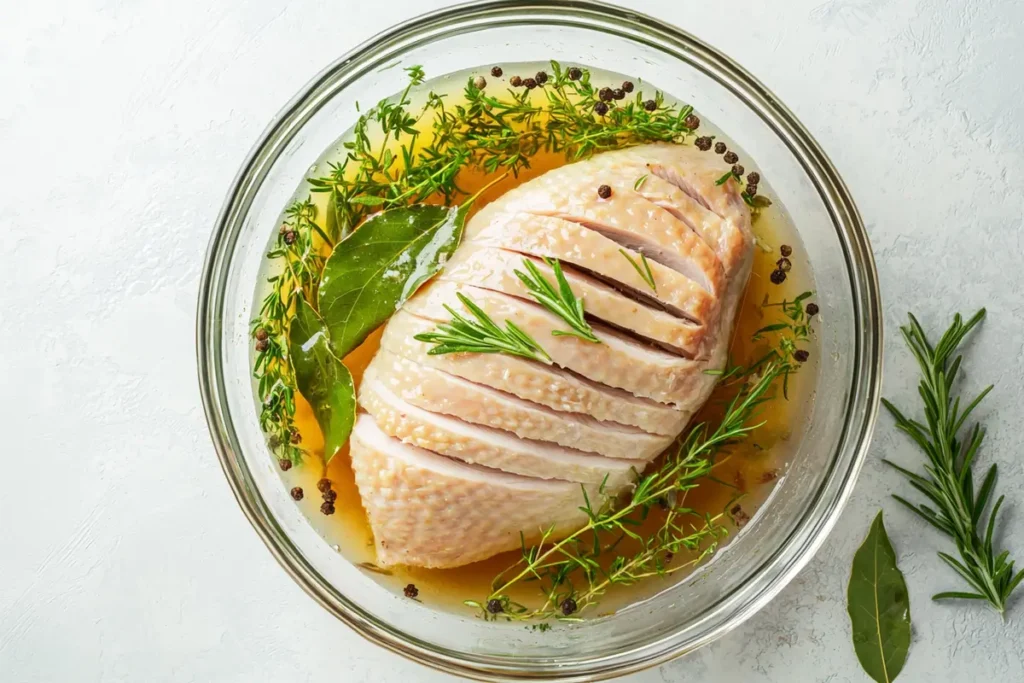
- Basic Brine Recipe:
- 1 gallon water
- 1 cup kosher salt
- 1/2 cup brown sugar
- Optional: herbs (rosemary, thyme), spices (peppercorns, bay leaves), or a splash of apple cider
- Brining Process:
- Dissolve the salt and brown sugar in a gallon of water. If you’re adding herbs or spices, toss them in now to infuse the brine with extra flavor.
- Place the turkey breast in the brine, ensuring it’s fully submerged. A large bowl or a resealable bag works well.
- Refrigerate the brined turkey for 8–12 hours, depending on its size.
- After brining, rinse the turkey breast thoroughly under cold water to remove excess salt, then pat it dry with paper towels.
Applying Rubs and Seasonings
- Traditional Turkey Rub Recipe:
- 2 tablespoons kosher salt
- 1 tablespoon black pepper
- 1 tablespoon smoked paprika
- 1 teaspoon garlic powder
- 1 teaspoon onion powder
- Application Process:
- Start by patting the turkey breast completely dry. Moisture on the surface can prevent the rub from adhering properly.
- Generously coat the turkey breast with the rub mixture, ensuring even coverage on all sides.
- Let the seasoned turkey rest at room temperature for about 30 minutes. This resting time allows the spices to penetrate the meat, amplifying the flavor.
Smoking Process
The smoking process is where all the preparation comes together, transforming your turkey breast into a masterpiece of smoky goodness. Choosing the right wood chips, smoker, and cooking techniques plays a crucial role in achieving that perfect flavor and texture.
Choosing the Right Wood Chips
The wood chips you select can significantly influence the flavor profile of your smoked turkey breast. Each type of wood offers a unique aroma and depth of taste, allowing you to customize the flavor to suit your preferences.
- Applewood: This is a popular choice for poultry because it provides a sweet, mild flavor that enhances the natural taste of turkey.
- Hickory: Known for its bold, smoky flavor, hickory is ideal if you’re looking for a stronger taste. It adds a distinct richness to the turkey.
- Cherrywood: If you want a slightly fruity undertone, cherrywood is an excellent option. It also gives the turkey a beautiful mahogany color.
- Maple: Maple offers a subtle sweetness and mild smokiness, making it a great choice for those who prefer a more delicate flavor.
Smoking Equipment Options
- Electric Smokers: These are beginner-friendly and provide consistent temperature control, making them a reliable option for smoking turkey breast. Simply set the temperature, add your wood chips, and let the smoker do the work.
- Charcoal Smokers: For an authentic smoky flavor, charcoal smokers are hard to beat. They require more attention to maintain the right temperature but reward you with a deep, traditional taste.
- Pellet Smokers: Pellet smokers combine the ease of electric smokers with the depth of wood-fired flavor. They use compressed wood pellets to provide a consistent heat source and a steady infusion of smoke.
- Gas Grills with a Smoking Box: Don’t have a smoker? No problem! A gas grill equipped with a smoking box can mimic the effects of a smoker, offering a convenient solution for smoking turkey breast without dedicated equipment.
Temperature and Timing Guidelines
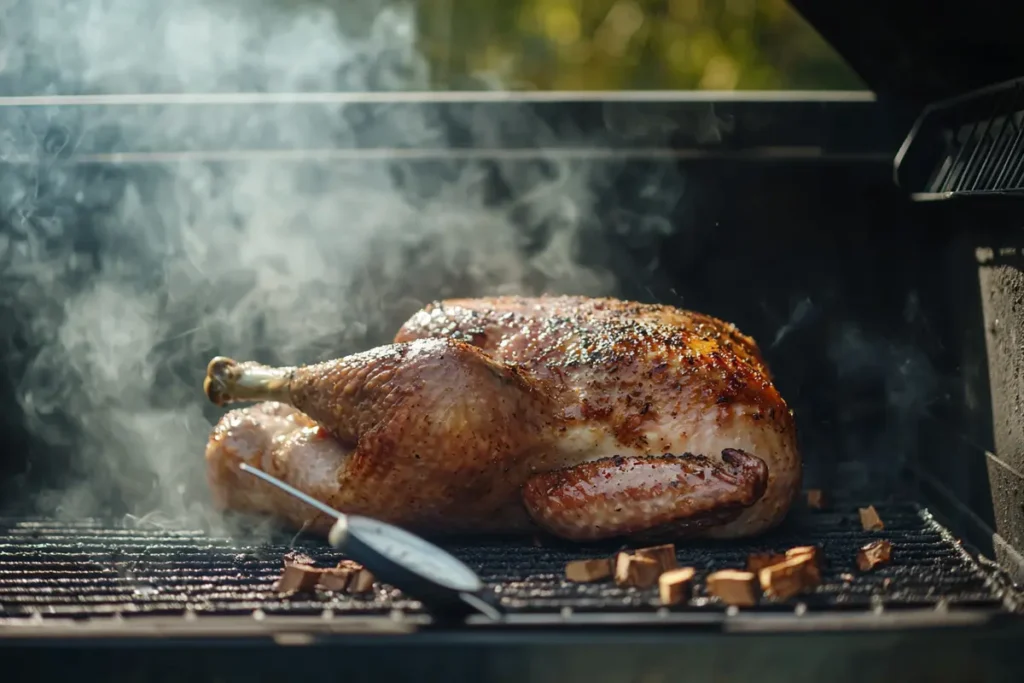
- Smoking Temperature: Maintain a steady smoker temperature between 225°F and 250°F. This range ensures the turkey cooks evenly while absorbing the smoky flavor.
- Internal Temperature: Always use a meat thermometer to check doneness. The turkey breast is ready when the internal temperature reaches 165°F in the thickest part. Insert the probe away from the bone for the most accurate reading.
- Estimated Cooking Time: A good rule of thumb is to smoke turkey breast for 30–40 minutes per pound. For example, a 6-pound turkey breast would require about 3–4 hours of cooking time.
Tips for Monitoring:
- Avoid opening the smoker too often, as this lets out heat and smoke, disrupting the cooking process.
- If possible, use a temperature probe that stays in the turkey during smoking for real-time monitoring.
Serving Smoked Turkey Breast
Resting and Carving Tips
Carving Process:
- Use a Sharp Knife: A sharp carving knife is essential for clean cuts and effortless slicing.
- Slice Against the Grain: Position the turkey breast so that you can cut perpendicular to the muscle fibers. This results in more tender and manageable pieces.
- Presentation: Arrange the slices neatly on a serving platter. For added flair, garnish the platter with sprigs of fresh rosemary or thyme. This not only adds a pop of color but also enhances the presentation with a touch of elegance.
Pairing Suggestions
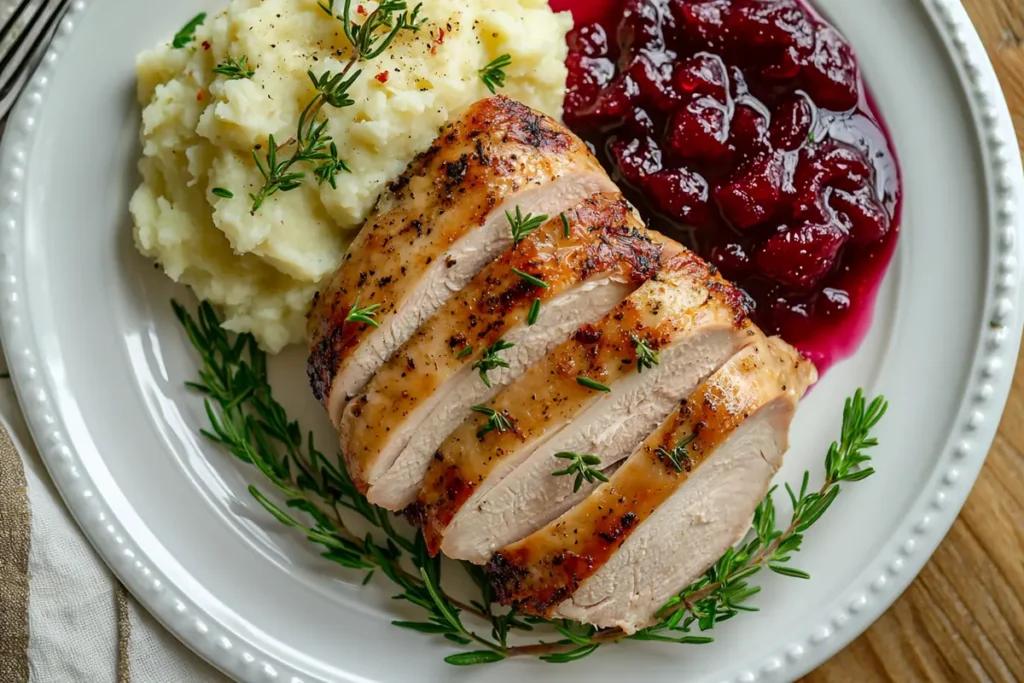
- Traditional Pairings:
- Mashed potatoes with creamy gravy
- Steamed green beans or roasted Brussels sprouts
- Sweet and tangy cranberry sauce
- Creative Pairings:
- Sweet potato casserole with a crunchy pecan topping
- Wild rice salad with dried cranberries and almonds
- Grilled asparagus drizzled with lemon garlic butter
Storing and Reheating Leftovers
Storage:
- Refrigeration: Transfer leftovers to airtight containers or wrap them tightly in aluminum foil. Store in the refrigerator within 2 hours of smoking to maintain freshness. Leftovers can last up to 4 days.
- Freezing: If you plan to save the turkey for a longer period, slice it into portions and wrap each tightly in freezer-safe bags or vacuum-sealed pouches. Frozen turkey can last up to 3 months without losing quality.
Reheating:
- Preheat your oven to 300°F.
- Place the turkey slices in a baking dish and cover with aluminum foil to lock in moisture.
- Heat for about 15–20 minutes or until the internal temperature reaches 165°F.
FAQs
How long does it take to smoke a turkey breast?
The smoking time depends largely on the size of the turkey breast. On average, it takes about 30–40 minutes per pound at a consistent smoker temperature of 225°F. For example, a 6-pound turkey breast would require approximately 3–4 hours. Always use a meat thermometer to confirm that the internal temperature has reached 165°F before serving.
Should I brine the turkey breast before smoking?
Absolutely! Brining is a highly recommended step when smoking turkey breast. It helps the meat retain moisture during the cooking process while infusing it with subtle flavors. A simple saltwater brine with optional herbs and spices can make a world of difference, ensuring a juicy and flavorful result.
What is the best wood for smoking turkey breast?
The best wood depends on the flavor profile you’re aiming for:
Applewood: Sweet and mild, perfect for enhancing poultry flavors.
Cherrywood: Fruity with a subtle aroma, giving a beautiful mahogany hue.
Hickory: Rich and bold, ideal for a more pronounced smoky taste.
How do I prevent the turkey breast from drying out during smoking?
There are several ways to ensure your turkey breast remains moist:
Brining: Soaking the turkey in a brine solution keeps it juicy.
Monitoring Temperature: Use a reliable meat thermometer and avoid overcooking.
Consistent Heat: Maintain a steady smoker temperature of 225–250°F to cook evenly without drying out the meat.
How do you keep turkey moist when smoking?
Keeping the turkey moist involves a few key practices:
Apply Butter or Oil: Coat the turkey breast with melted butter or oil before adding the rub. This helps lock in moisture.
Wrap in Foil: During the latter part of the smoking process, wrapping the turkey in foil can help retain juices.
Rest the Meat: After removing it from the smoker, allow the turkey to rest under foil for 15–20 minutes to redistribute the juices.
Is it better to smoke a turkey at 225 or 250?
Both temperatures can work, but each has its advantages:
225°F: Cooking at a lower temperature results in a deeper smoky flavor and slightly more tender meat. However, it takes longer.
250°F: This slightly higher temperature shortens cooking time while still delivering great flavor and tenderness. It’s a good balance for those who prefer a quicker process.

Smoked Turkey Breast: A Flavorful and Easy Dish for Any Occasion
- Total Time: PT3H15M
- Yield: 6 servings 1x
- Diet: Gluten Free
Description
This smoked turkey breast recipe delivers a juicy, tender, and flavorful dish that’s perfect for holiday dinners or weekend feasts. Slow-smoked over applewood chips and infused with a savory blend of spices, this turkey breast boasts a beautiful golden crust and moist interior.
Ingredients
For the Brine (Optional but Recommended):
-
1 gallon cold water
-
1 cup kosher salt
-
1/2 cup brown sugar
-
1 tablespoon black peppercorns
-
3 bay leaves
-
4 sprigs fresh rosemary
-
2 sprigs fresh thyme
For the Turkey Breast:
-
1 (4–6 pound) boneless or bone-in turkey breast, thawed
-
2 tablespoons olive oil or melted butter
Dry Rub:
-
2 tablespoons kosher salt
-
1 tablespoon smoked paprika
-
1 tablespoon garlic powder
-
1 tablespoon onion powder
-
1 teaspoon black pepper
-
1/2 teaspoon dried thyme
-
1/2 teaspoon dried sage
For Smoking:
-
Wood chips (applewood, cherrywood, or hickory)
-
Water for the smoker tray
Instructions
-
(Optional) Brining: In a large container or zip-top bag, combine brine ingredients and stir until salt and sugar dissolve. Submerge turkey breast in the solution, cover, and refrigerate for 8–12 hours. Remove and rinse turkey breast under cold water. Pat dry with paper towels.
-
Prep the Turkey: Rub olive oil or melted butter over the entire turkey breast.
-
Season: In a small bowl, mix all dry rub ingredients. Generously apply the rub to all sides of the turkey breast, pressing gently so it adheres.
-
Preheat the Smoker: Set your smoker to 225°F (107°C). Add wood chips and fill the water tray if applicable.
-
Smoke: Place the turkey breast on the smoker grate, skin side up. Insert a meat thermometer into the thickest part. Smoke for approximately 30–40 minutes per pound, or until internal temperature reaches 165°F (74°C).
-
Rest and Serve: Remove turkey breast and tent with foil. Let rest for 15–20 minutes. Slice against the grain and serve warm.
Notes
Serving Tip: Pairs well with mashed potatoes, cranberry sauce, and grilled vegetables.
Taste Adjustments: Add lemon zest to the rub for brightness or replace thyme with oregano for a Mediterranean twist.
- Prep Time: PT15M
- Cook Time: PT3H (based on a 5–6 lb turkey breast)
- Category: Dinner
- Method: Smoking
- Cuisine: American, Holiday
Nutrition
- Serving Size: 1/6 of recipe
- Calories: 310 kcal
- Sugar: 2 g
- Sodium: 710 mg
- Fat: 14 g
- Saturated Fat: 3 g
- Unsaturated Fat: 10 g
- Trans Fat: 0 g
- Carbohydrates: 5 g
- Fiber: 0.5 g
- Protein: 42 g
- Cholesterol: 115 mg
Keywords: smoked turkey breast, holiday turkey, smoked meat recipe, thanksgiving turkey, turkey breast smoker, brined turkey breast, BBQ turkey breast, gluten-free turkey, smoked poultry, holiday dinner recipe

